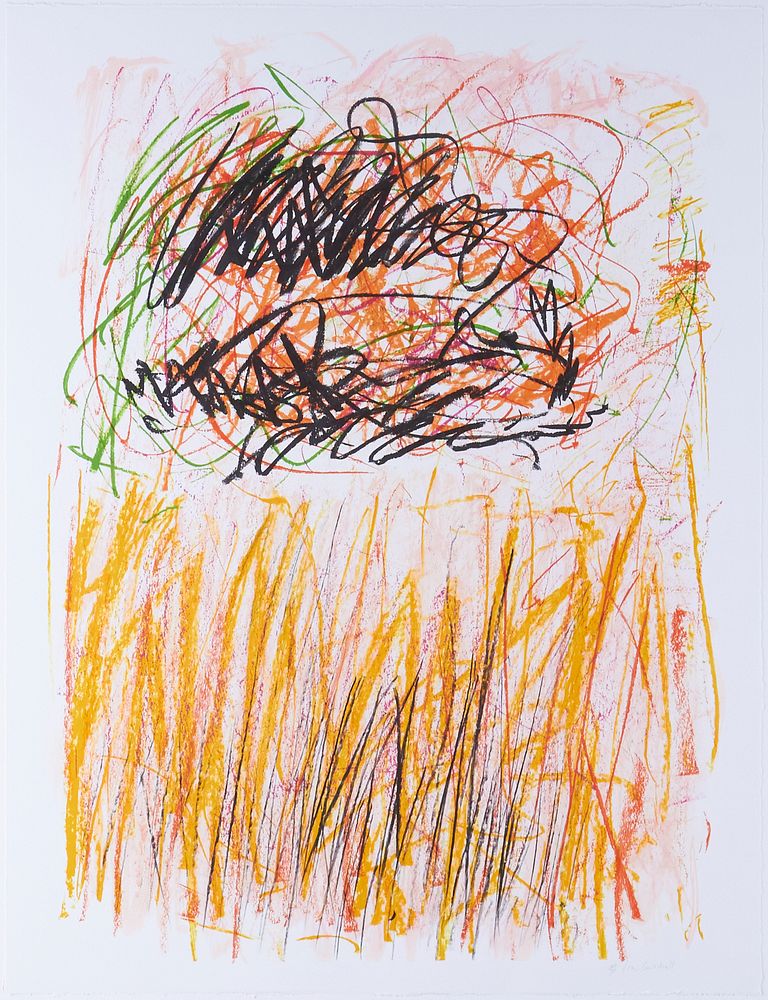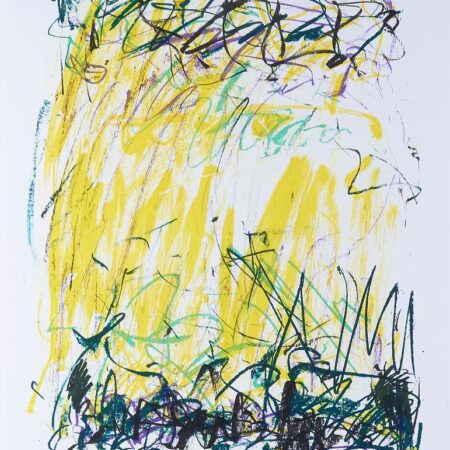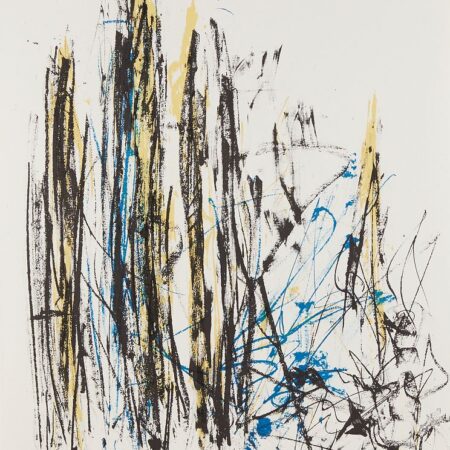
Joan Mitchell (American, 1925-1992).
Lithograph on paper titled “Flower I” from the “Bedford” series, 1981. Pencil signed and numbered 50/70 along the lower right. “I carry my landscapes around with me.” – Joan Mitchell.
Joan Mitchell was a central second generation member of the Abstract Expressionist movement. Her works are distinguished by their forceful, colorful lines, which often earn them comparisons to calligraphy. Unlike many of her Abstract Expressionist peers, Mitchell carefully planned her works, providing a grounded contrast to what at first glance might seem chaotic. Mitchell grew up in a wealthy family in Chicago, the child of a doctor and a poet. She was an athletic child, winning many figure skating competitions throughout her youth. Along with sports, she took an early interest in art, drawing and painting throughout her childhood. Her parents and teachers were supportive of her artistic interests: she staged her first art show at her school when she was only twelve years old. Following high school, she enrolled at Smith College to study English.
After two years, she decided to pursue her art full-time and transferred to the School of the Art Institute of Chicago, where she received her BFA and MFA in painting. She continued her education in New York and in Paris, before settling in New York in 1950. In New York, she fell in with the Abstract Expressionist group. She became close with Willem de Kooning and Franz Kline, who became her mentors. She was soon invited to join the Club, an organization of Abstract Expressionist artists. The Club worked together to organize exhibitions, as well as providing a space for artistic discourse and community building. She participated in several notable shows during this period, including Leo Castelliís Ninth Street exhibition, solidifying her place in the New York artistic scene. In 1952, she had her first solo exhibition at the New Gallery in New York.
In 1955, she began traveling back and forth between Paris and New York, and in 1959, she settled permanently in France. She continued to exhibit regularly in both France and in the United States throughout the rest of her career. Her work pushed boundaries, pushing back on her Abstract Expressionist peers just as she pushed back on the artistic establishment. Her works make use of vigorous lines and bright colors; however, unlike many of her contemporaries, her work is frequently rooted in the physical. Instead of solely representing emotions and concepts, they often represent tangible objects, particularly plants and other aspects of the natural world. “Flower I” is fresh, bright, and joyful. The strokes of vibrant apricot and red stretch upward, like the stalks of flowers growing toward the warmth and light of the sun. Above, frantic swirls of the deepest black are superimposed over a thicket of oranges, reds, and greens, which radiate out toward the edges of the work.
The movement throughout the work is highly evocative of the growth and movement of flowers, stretching, swaying, and filling the air with their sweet scent.
Unframed; height: 42 in x width: 32 1/2 in.
Framed; height: 47 1/4 in x width: 37 1/4 in.
$15,000

